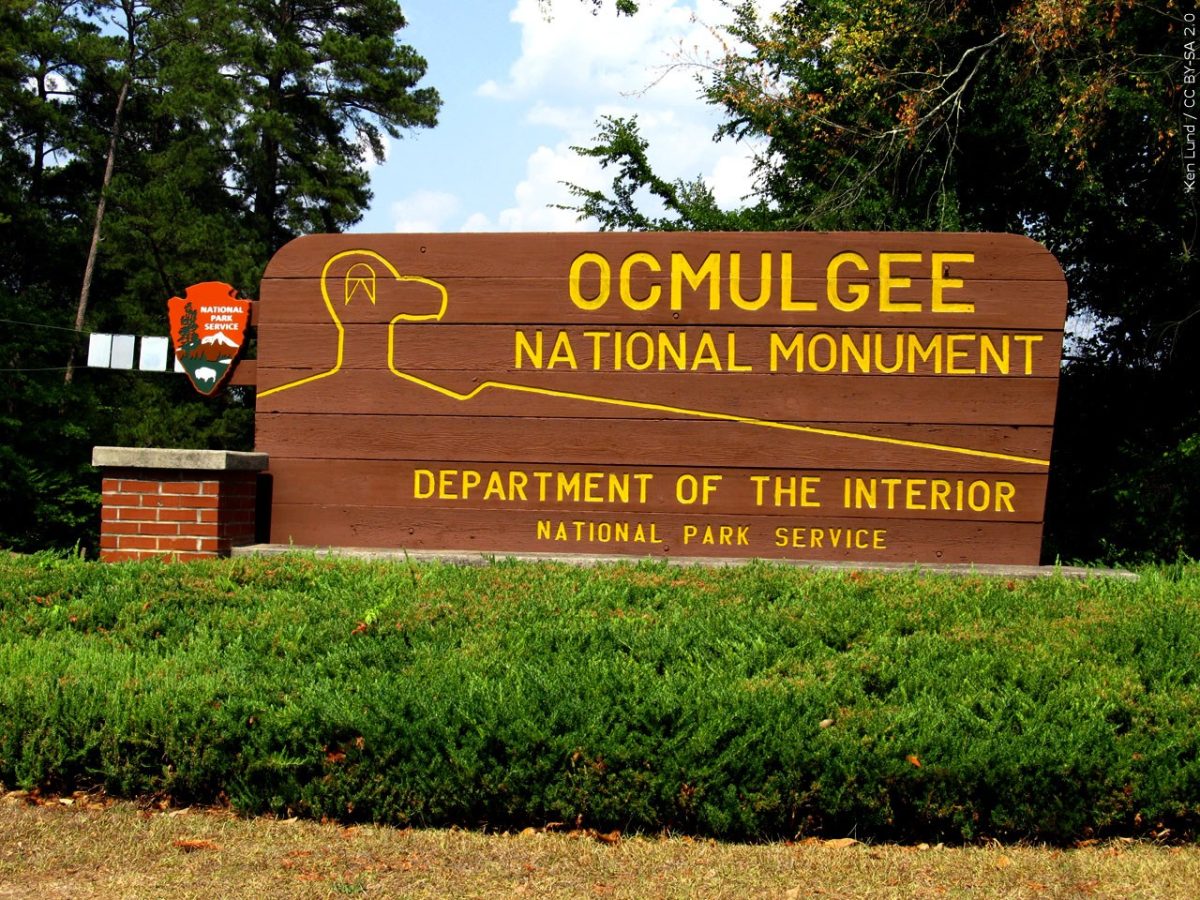Last month, Georgia legislation that would redesignate Georgia’s Ocmulgee Mounds National Historical Park as a full national park and federal preserve passed out of the Georgia Senate committee and is now eligible to be heard on the Senate floor. Located just 30 miles away in Macon, Ga., the Ocmulgee Mounds were originally established in 1936 as part of the New Deal program.
In 2019, the park was expanded from 702 acres to more than 2,800 acres and was redesignated as a National Historic Park. Now, five years later, the same lawmakers are seeking to expand the park even further as Georgia’s first national park and preserve.
The mounds themselves make up the largest archaeological exploration in North America, as scholars estimate humans have inhabited the area for 17,000 years. According to Jessica Wallace, an assistant professor of history at GCSU, millions of artifacts have been uncovered and cataloged at the site.
“It’s a really great window into the types of cultures that lived in Middle Georgia over the last thousands of years,” Wallace said. “Most of the archeology that’s been done there focuses on cultures that were around what we would call the medieval time in Europe, people living in the Americas prior to Columbus.”
The park also includes exhibits on Civil War battles that took place in Macon, as well as showcasing trade between early Georgians and the Muscogee-Creek. However, most of the exhibits focus on a settlement before the Muscogee-Creek and the cultural significance of the mounds.
Many Native American cultures built mounds for a variety of uses, but especially for ceremonial purposes, such as burials, and as homes for the region’s political and religious elite. They were also used as markers of territory or social status amongst tribes. The park contains seven mounds.
The mounds are particularly important to Muscogee-Creek. They were removed from Georgia in the early 19th century, but many descendants are still deeply connected to their ancestral homelands. The National Park and Mounds Association prioritizes close contact with the Creek’s tribal leaders, also hosting an annual celebration of Native American culture.
“The current push to make it not just a historic park but also a national park includes a lot of input from tribal leaders, who will kind of co-lead the national park once it’s in place,” Wallace said. “I think it’s a great opportunity for Macon to learn about the past, learn about the Native American present and to hopefully bring more people to our region to learn about the Southeast.”
While historical parks tend to be smaller and focused on one historical place, such as a house or, in this case, a mounds complex, a national park would include more land, setting aside more of the Muscogee homeland as nationally protected and preserved. If the site becomes a national park, for the first time in history, a tribe that was once removed from the land will be able to help manage the land once again.
Eowyn Agullo, a junior history major, noted the importance of commemorating the past through monuments and parks.
“Often, American history is predominantly about white Americans, and so it’s great that we remember those who were here before us,” Agullo said. “By remembering our past, we’re able to move forward in a better light, towards a future that accepts all of us.”
Today, the site includes a main path that tours the Great Temple Mound, an Earth Lodge, a visitor’s center museum, a trading post site and several trails for visitors to explore.
The park is also home to over 170 bird species and 35 reptile species, such as alligators, turtles and snakes, as well as fish in the Ocmulgee River. With opportunities for wildlife viewing and recreation, the park not only holds historical and cultural significance but also has potential for environmental education.
“It’s going to provide some educational value for the natural and original environment and ecosystem of Georgia, really preserving the original state of Georgia,” said Arden Pantsari, a freshman environmental science major.
Every March, the park offers Lantern Light Tours led by local guides and history professors, who offer interpretative talks along an illuminated path from the visitor center to the Great Temple Mound.
Another annual favorite is the Ocmulgee Indigenous Celebration, which draws different tribes from across the Southeast to celebrate their culture and history. Past gatherings have featured Native American storytelling, a Choctaw youth stickball demonstration and indigenous performances such as the Muscogee Creek Stomp Dancers and the Mvskoke Hymn Singers.
“We have an ancient past in the United States as well, it’s just not as well-known as ancient Rome or ancient Greece,” Wallace said. “But people have lived in the United States for a very long time too, and having one of those sites set aside as a national park can hopefully allow more people to experience what life was like before Americans.”


